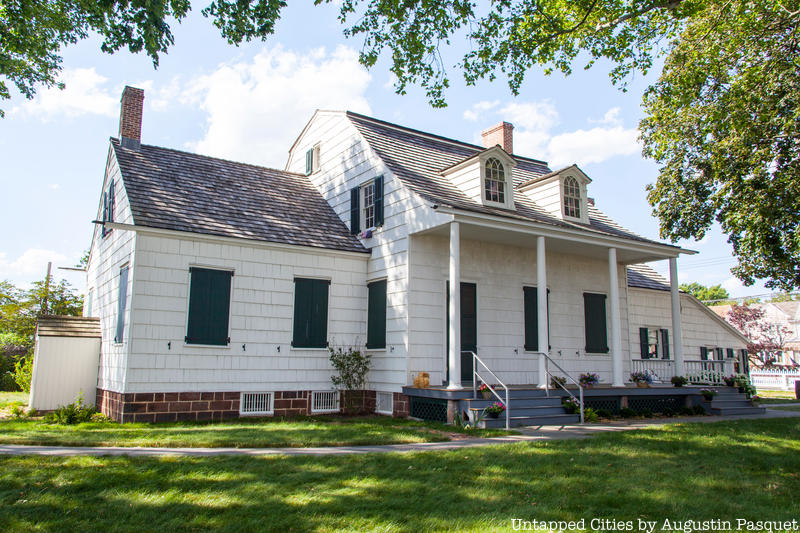3. The Hendrick I. Lott House, 1720

The Hendrick I. Lott House in Marine Park is one of the oldest surviving Dutch Colonial farmhouses in Brooklyn. It was described by Friends of the Lott House as “50 years older than America itself, built as Swift began Gulliver’s Travels and Bach completed the Brandenburg Concerto,”. The house’s earliest iteration appeared in 1720, after the prosperous farmer and member of the New York Colonial Assembly, Johannes Lott, purchased the land the house stands on in 1719. Hendrick I. Lott, Johannes Lott’s grandson, chose to expand the house and made the original building the east wing of his new homestead. Lott kept the classic Dutch Colonial gambrel roof but added several English features to the structure, creating the Dutch-English mix seen in most American buildings of the time. The Hendrick I. Lott House held the title for longest continual ownership of a property by a single family in New York City until it was purchased by the City of New York in 2001.
At its grandest, the Lott’s farm had a size of more than 200 acres, and the family owned more slaves than any other family in the neighborhood. It’s believed, however, that the Lott family may have been abolitionists – they actually freed their slaves by 1805, two decades before the abolition of slavery in the state of New York and there is physical evidence that house served as a stop on the Underground Railroad.
The Lott House is undergoing restoration and is occasionally opened to the public, such as on tours for Untapped Cities Insiders. There you can see the closet within a closet that is believed to have been a temporary haven for slaves escaping along the Underground Railroad.
The Hendrick I. Lott House is located at 1940 E 36th St, Brooklyn.





